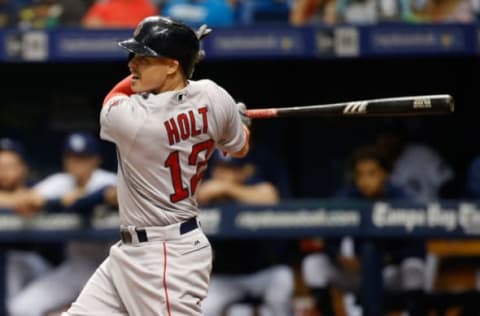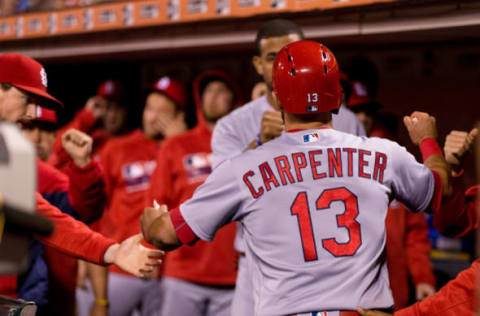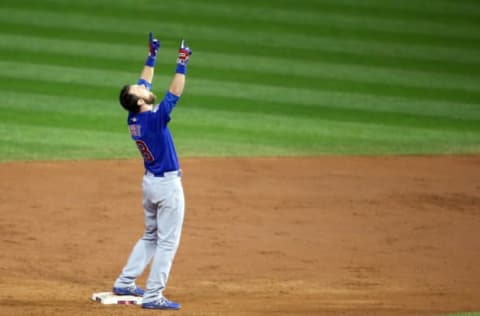MLB: The Three Best Utility Players


Utility players can be a lot more beneficial to an MLB team than most assume. With the ability to play multiple positions, these players can fill any number of voids a team has.
I have always found it interesting that players are not as versatile as they could be. Sure, there are that select handful that go out and prove they can play multiple positions, but not as many as you would think. These players have been playing baseball their entire lives, so chances are in little league they all played shortstop, caught, or pitched. Of course, the talent level in MLB is tremendous and one cannot simply pitch against major league hitters without endless practice. However, the jump from shortstop to first base theoretically shouldn’t be a hard one, yet few players make those transitions.
I know that nearly every MLB outfielder played infield growing up, because coaches always put the best kids in the infield. Heck, Bryce Harper was even a catcher his whole life up until he was drafted by the Nationals. It may have been several years, but these players have likely fielded thousands of ground balls in their life, and to think that they cannot play the infield after familiarizing themselves is absurd.
That is what has made utility players so valuable in the landscape of MLB. Yes, the amount of players playing multiple positions seems to be increasing, but not many are comfortable leaving the familiarity of their normal position. So, with that in mind, let’s take a look at the three best utility players baseball has to offer.

3. Brock Holt
Brock Holt is the perfect example of what a utility player should be. Utility players usually serve as backups, and most of the time get ample playing time due to other players’ injuries. There is a very good chance Holt may defer his utility service to play third base, if Pablo Sandoval cannot return in good form. However, Holt is the super-utility man of the Boston Red Sox, as he is considered a backup for every position except first base and catcher. The great part, too, is that Holt can play first base as he has in the past, which makes him all the more versatile.
Brock Holt has played positions aside from catcher and pitcher since becoming a part of Boston, and his duties were recognized with a trip to the All-Star game in 2015. The great thing for Brock is that despite fielding so many different positions, his defense is still great. His career fielding percentage is .972, which is extremely solid considered he has done that in seven different spots. The position he struggles most with is third base, posting a .949 fielding percentage. However, the league average for third base is .957, so he is not far off the mark.
Holt is a pretty solid offensive option as well. While he certainly won’t wow you in any sort of way, he does put together decent numbers at the dish. Holt is a career .272 hitter with potential to have a little bit of pop. In 94 games Holt hit seven home runs, so the potential for a 15 home run season is there. Like I said, it is nothing amazing, but definitely good enough and a great option for Boston coming off the bench.

2. Matt Carpenter
Matt Carpenter has been the most consistent star of the St. Louis Cardinals and has proven time and time again to be a postseason menace. Carpenter also holds value in the amount of positions he can play, as the Cardinals can practically craft any sort of talent around him. While he may not have the defensive versatility of Brock Holt, his offensive numbers are his driving point. Being a reliable fielding option alongside a great bat is a key asset to the Cardinals.
While Carpenter only played three separate positions in 2016, he has shown the ability to play even more. In 2016, Carpenter played first, second and third base. However, in the past Carpenter has played both corner outfield positions, showing his flexibility to play in the outfield as well. This allows the Redbirds to have confidence in Carpenter, as they know wherever they place him he will thrive. That is backed up by his three All-Star Game appearances and Silver Slugger award.
Carpenter is a consistent .270 hitter who has some power to go alongside with it, slugging a combined 49 home runs in the last two seasons with 132 runs batted in. Carpenter possesses the pure ability to get on base; whether through his good amount of hits or walks, he is consistently on base for the Redbirds. All of that hard work has paid off, as Carpenter ranks ninth in on-base percentage since the start of 2013.

1. Ben Zobrist
Back-to-back World Series winner Ben Zobrist is the best utility player in baseball. Honestly, it was very hard to choose between Zobrist and Carpenter atop the list, but Zobrist gets the slight nod. Zobrist just seems to have that “it” factor. Although Carpenter slightly outperforms him at the plate, Zobrist seems to be the better all-around player. I mean, c’mon, the guy has won consecutive World Series, in both of which he was a major contributor.
Zobrist is a more versatile fielder than Carpenter, which helps give him the slight advantage. Zobrist has shown he can play both middle infield positions, either corner infield spot and either corner outfield spot. While he may not thrive at third base or right field, he has shown the ability to play there. In a sense, Zobrist presents the best of both worlds between Brock Holt and Matt Carpenter, which cements his spot atop the list.
More from Call to the Pen
- Philadelphia Phillies, ready for a stretch run, bomb St. Louis Cardinals
- Philadelphia Phillies: The 4 players on the franchise’s Mount Rushmore
- Boston Red Sox fans should be upset over Mookie Betts’ comment
- Analyzing the Boston Red Sox trade for Dave Henderson and Spike Owen
- 2023 MLB postseason likely to have a strange look without Yankees, Red Sox, Cardinals
Next: Three Players Who Should Retire in 2017
His hitting is decent, as he is a career .266 hitter. However, he rarely strikes out, as he holds just a 11.8 percent strikeout rate. With the potential to slug 20 home runs, and that “clutch” gene, Zobrist proves to be baseball’s best utility man. Zobrist’s 10 hits in this year’s World Series show that veteran, dynamic presence he brings to the table. He has been great for so long, and is baseball’s top utility player.